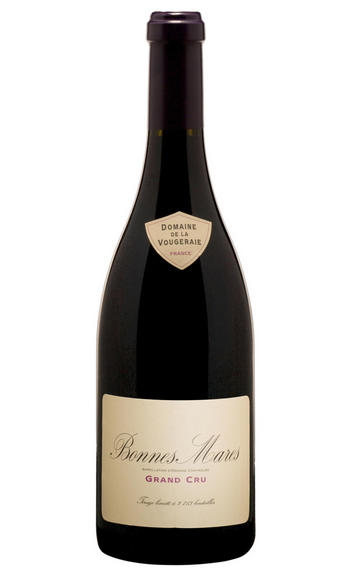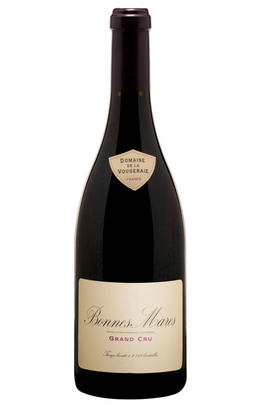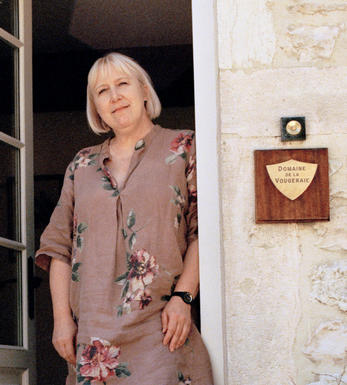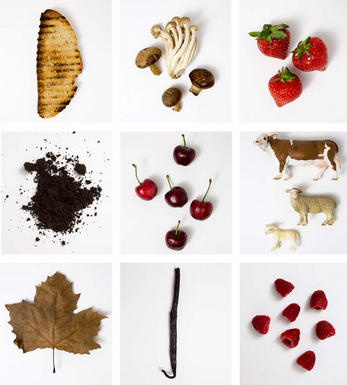
2016 Bonnes Mares, Grand Cru, Domaine de la Vougeraie, Burgundy

Critics reviews
Neal Martin - 29/12/2017
About this WINE

Domaine de la Vougeraie
Domaine de la Vougeraie is part of our Spotlight on sustainability series. You can view the full range here.
Domaine de la Vougeraie, based in Premeaux just south of Nuits St Georges, was created in 1999 when Jean-Claude Boisset of the Boisset group decided to group together all the vineyard holdings of his various negociant companies acquired over the years. The name comes from the significant holdings – and indeed Jean-Claude Boisset’s home – in the village of Vougeot. The winery is located however in the old Claudine Deschamps (Madame Jean-Claude Boisset) cellars in Prémeaux. The domaine was put together from the various vineyard holdings which had accrued through the Boisset acquisitions of Burgundian houses over the years. Pascal Marchand was put in charge in 1999, with Bernard Zito in the vineyards, which were farmed biodynamically. Pascal produced powerful wines, fairly heavily extracted in his early vintages but clearly was subsequently moving to a softer approach by 2004.
With nearly 40 hectares of vineyard and over 30 different appellations, including six grand crus (Musigny, Bonnes Mares, Clos Vougeot, Charmes Chambertin, Mazoyères, Corton Clos du Roi and Corton Charlemagne), this is one of Burgundy’s leading domaines.
No expense has been spared in production terms. The premier and grand cru vineyards are all farmed biodynamically with carefully limited yields. The cellar has been equipped with a battery of new or renovated wooden fermentation vats, a state of the art sorting table and a new model of the old fashioned vertical press which is thought to be the best option for red wines. The wines were made by Pascal Marchand of Comte Armand in Pommard, from 1999 to 2005 and subsequently by Pierre Vincent who has maintained the more delicate approach. The grapes are sorted on one of the longest tables de tri I have seen, before being given a cool pre-maceration. During fermentation Pierre punches down only once a day, much less than Pascal used to. The temperature is maintained at 26º-28ºC/79-81ºF after fermentation to polymerise the tannins and fix the colour. The Musigny is destemmed by hand. Starting in 2008 he has begun to experiment with some whole bunch fermentation, though only for a proportion of a given cuvée.

Pinot Noir
Pinot Noir is probably the most frustrating, and at times infuriating, wine grape in the world. However when it is successful, it can produce some of the most sublime wines known to man. This thin-skinned grape which grows in small, tight bunches performs well on well-drained, deepish limestone based subsoils as are found on Burgundy's Côte d'Or.
Pinot Noir is more susceptible than other varieties to over cropping - concentration and varietal character disappear rapidly if yields are excessive and yields as little as 25hl/ha are the norm for some climats of the Côte d`Or.
Because of the thinness of the skins, Pinot Noir wines are lighter in colour, body and tannins. However the best wines have grip, complexity and an intensity of fruit seldom found in wine from other grapes. Young Pinot Noir can smell almost sweet, redolent with freshly crushed raspberries, cherries and redcurrants. When mature, the best wines develop a sensuous, silky mouth feel with the fruit flavours deepening and gamey "sous-bois" nuances emerging.
The best examples are still found in Burgundy, although Pinot Noir`s key role in Champagne should not be forgotten. It is grown throughout the world with notable success in the Carneros and Russian River Valley districts of California, and the Martinborough and Central Otago regions of New Zealand.


Buying options
Add to wishlist
Description
Sadly, the crop is down 50 percent after the frosts. Vougeraie has 0.70 hectares but they cover the two terroirs, terres blanches marl and the more clay-rich terres rouges, combining the subtler elements of the first and the burly notes of the second. This is good and strong, just as you would want from this Cru, with the energy of 2016 driving the deep brooding, cherry- infused palate. Drink 2022-2033.
Adam Bruntlett, Burgundy Buyer
Based in Premeaux, just south of Nuits-St Georges, Domaine de la Vougeraie was created in 1999 when Jean-Claude Boisset decided to group together all the vineyard holdings of the various négociant companies he had acquired over the years. Pascal Marchand was put in charge in 1999, with Bernard Zito in the vineyards, which are farmed biodynamically. Pascal produced powerful wines, fairly heavily extracted in his early vintages but clearly moving to a softer style by 2004. The wines have subsequently been made by Pierre Vincent who has maintained the more delicate approach. Top-quality vineyards continue to be added, especially Grand Cru whites in recent vintages. This is Pierre Vincent’s last vintage, as he is now installed at Domaine Leflaive. Vougeraie is very happy with this year’s result, another domaine to call the vintage “très Bourguigonne”, meaning that the precision and purity of the fruit means this is more terroir-focused than 2015’s broader and more intense style. They are also very happy with the way the frosted and non-frosted vines finally ripened homogenously, giving much of the credit to their biodynamic culture. Given the health of the berries, a lot of whole bunches were used at fermentation.
wine at a glance
Delivery and quality guarantee